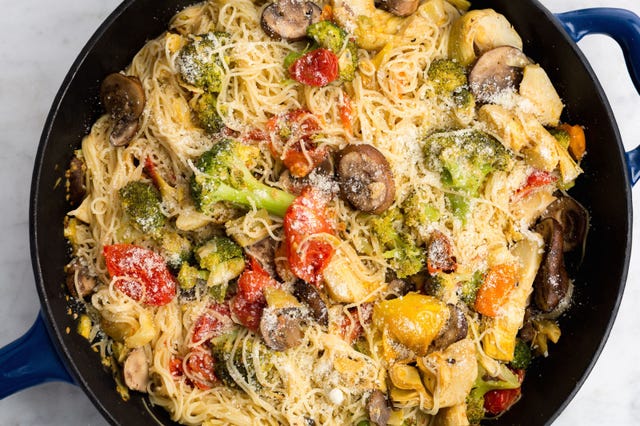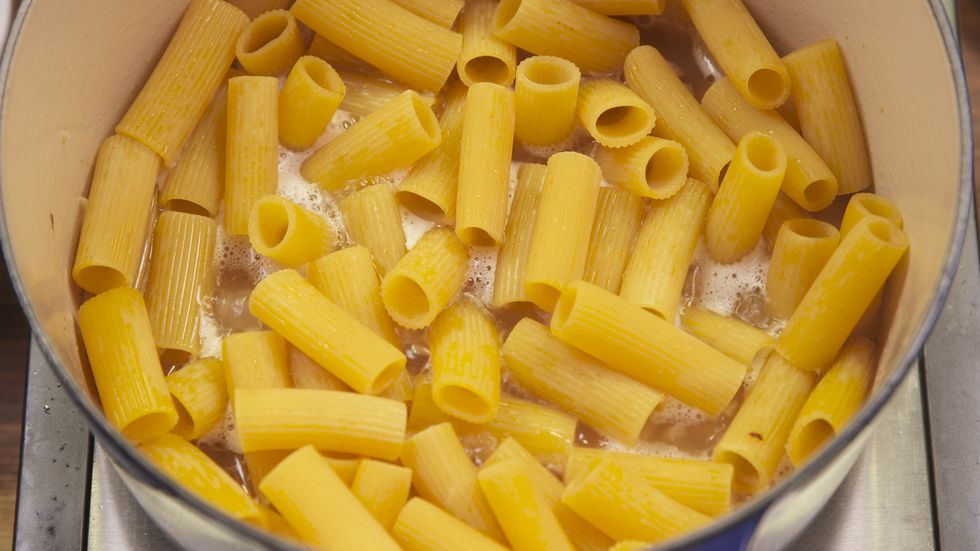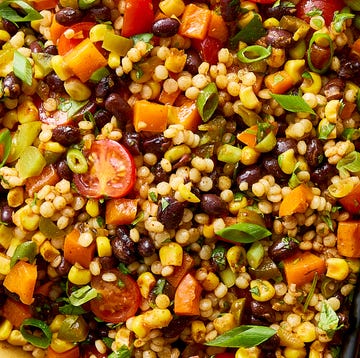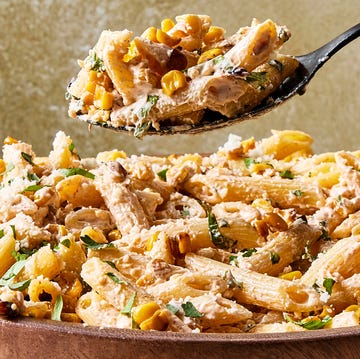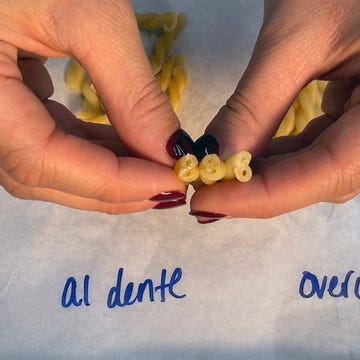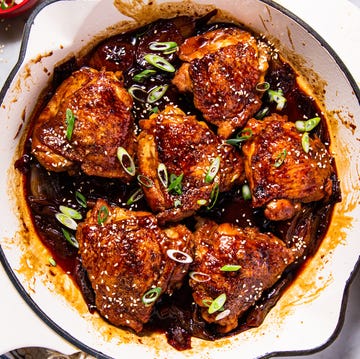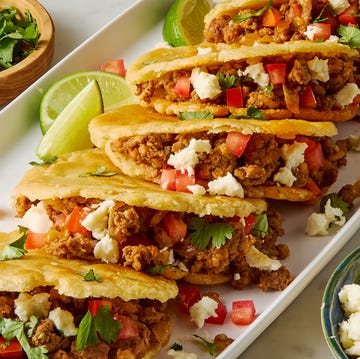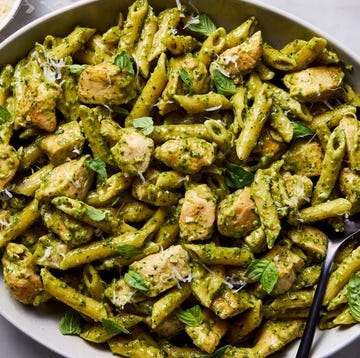Pasta is probably one of the first dishes you ever learned how to make, and one you haven't really tinkered with since. It's pretty straightforward: Boil water—maybe add salt to season the noodles, or oil to keep them from sticking*, depending on what you were told—and add rigatoni, spaghetti or whatever starchy shape you want. But that's not the only (or the fastest) way to do things.
Try these cooking tricks to get dinner on the table faster—and enjoy every bite even more.
1. Try the Mac Daddy of Mac & Cheese Hacks.
Plenty of macaroni and cheese recipes call for partially cooking the pasta, draining and setting it aside, making the sauce, then tossing the two together and baking. Save yourself a few steps with this one-pot method: Cook the elbow noodles (or cavatappi, or whatever small shapes catch your eye) in a 50/50 mix of chicken broth and water, and once the noodles are al dente, add in whatever shredded cheeses you like, stirring to melt. The remaining broth-water mixture will help the cheese melt, creating a sauce that will thicken as it cools.
Try it for yourself with this easy Carbonara Mac & Cheese.
2. Let Your Slow Cooker Do the Work.
About 15 minutes before your Crock-Pot soup or stew is ready to eat, toss in whatever pasta you'd like to use. That way you have one less pan to clean, you're not waiting for water to boil, and everything's ready at about the same time. (You can gauge the time according to the instructions on the pasta box.)
Warning: It's tempting to dump everything into the slow cooker at once, pasta included, and leave it cooking for the next 6 to 8 hours, but the noodles will totally disintegrate, turning the liquid into a starchy goo.
3. Steal Alton Brown's Cold-Cooking Pasta Hack.
Brown's the first to admit he "really messed up with cooking pasta" in the first season of Good Eats when he told people to bring a gallon of water to a boil, then add the noodles. These days, he pours the pasta in first, adding only enough water to cover the noodles, then brings it to a boil.
It's a faster way to cook, but Brown also does it because he prefers the texture of the pasta when it's made that way.
4. Turn Up the Heat on Your Pasta Water.
Scoop out those noodles right when they turn al dente—still firm when bitten—with a slotted spoon or spider (a mesh ladle, basically) rather than dumping everything into a colander. Pour out all but a cup of the pasta water, but don't add it to the sauce just yet. Brown recommends cooking that cup of water down until it's reduced in half, so it's ultra-starchy, then add it to your tomato sauce.
It thickens up the sauce, and is—as Brown writes—"magical stuff."
5. Don't Be Too Chicken to Try Chicken (Broth).
Chicken broth works well in creating a mac and cheese sauce that'll have people chanting "gimme, gimme more" like a flock of circa-2009 Britney Spears clones, but it also works well with spring pastas (particularly bacon-based ones).
Cooking pasta in about 2 1/2 cups of chicken broth, letting it cook until the pasta noodles are al dente. At this point, there should be only a couple tablespoons of broth leftover, which is just enough to cook any veggies you want to add to the dish, like asparagus or broccoli.
Get the full details on this hack—and the cheesy bacon asparagus pasta recipe that goes with it—here.
*6. Skip the Olive Oil.
If you've grown up adding olive oil to your pasta water to keep the noodles from sticking, Italian chef Lidia Bastianich encourages you to stop. Now.
"You know the old saying: You throw the pasta to the wall and when it sticks, it's done? That's because there's a layer of starch on the pasta and that's what the sauce adheres to. So you don't want a coat of oil on it, and you don't want to rinse your pasta," she told The Splendid Table.
7. Test Jamie Oliver's Twist Trick.
Instead of adding olive oil, chef Jamie Oliver swears by grabbing long noodles in both hands (one on top of the other, like you're Gandalf holding a staff and shouting "you shall not pass!" to ward off a demonic enemy) and twisting the pasta. The noodles will fan out a bit, and when you drop them in the pot of water, they're less likely to stick together as they cook, he says.
8. Transform Second-Day Pasta.
Growing up, my grandmother used to store leftover spaghetti noodles in the fridge, pulling them out to make "fried pasta." She'd heat up a sauté pan, cooking diced bacon or pancetta in it, then add the noodles, cooking them until they were slightly crispy. It changes the texture, creating a salty, crackling dish that goes well with roasted vegetables or a side salad.
9. Grab a Spoon Instead of a Lid.
If you've ever put a lid on boiling pasta, only to have the water bubble over, (1) you're not alone, and (2) there's a better way. Putting a long wooden spoon across the top of pot instead can act as a buffer, causing any bubbles that pile up to burst, which in turn causes all of the bubbles underneath to pop, keeping that froth from spilling over. That's because that starchy foam on top of the bubbling water is thermodynamically unstable, according to Gizmodo.
Follow Delish on Instagram.
